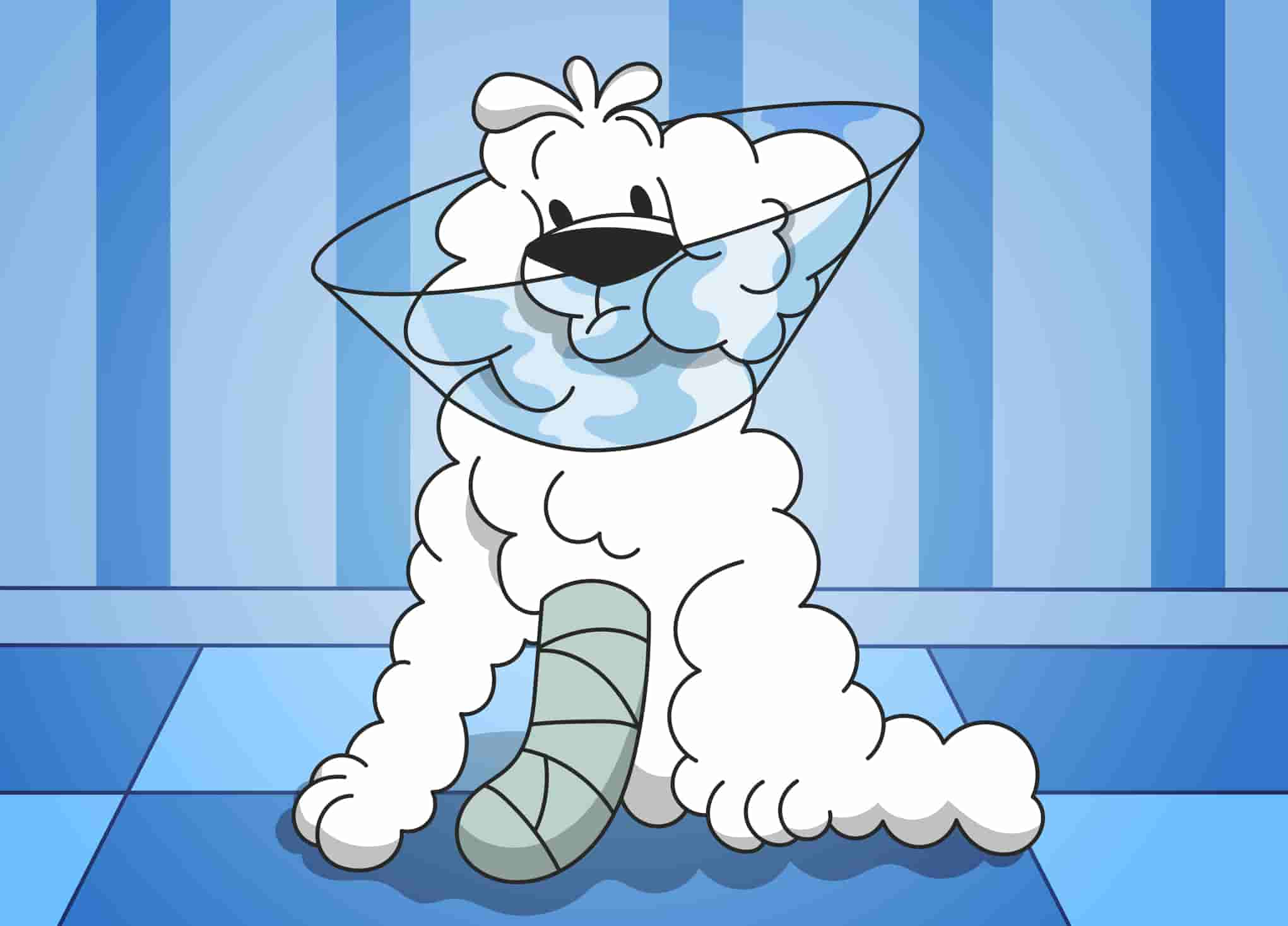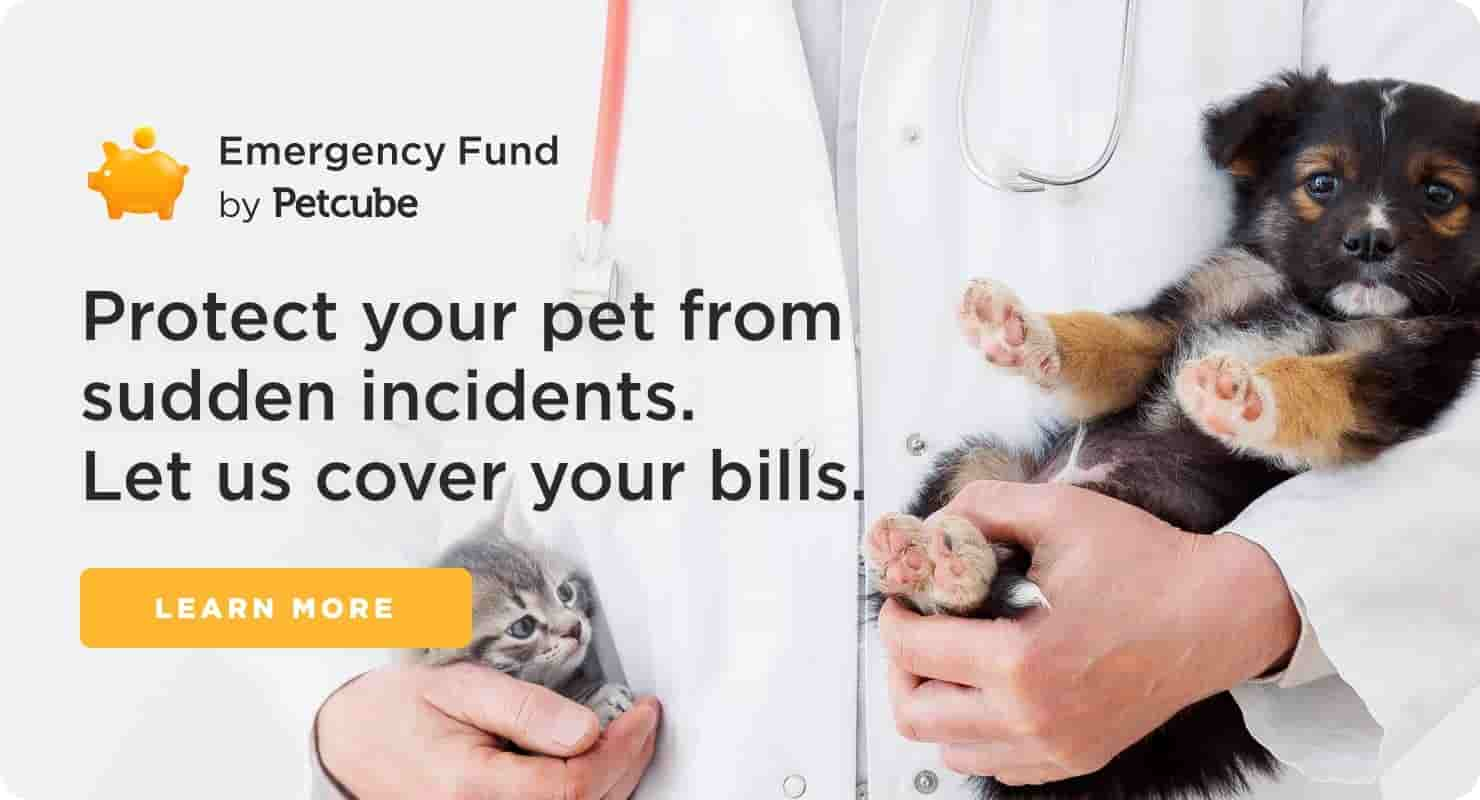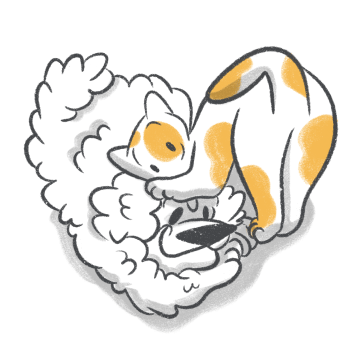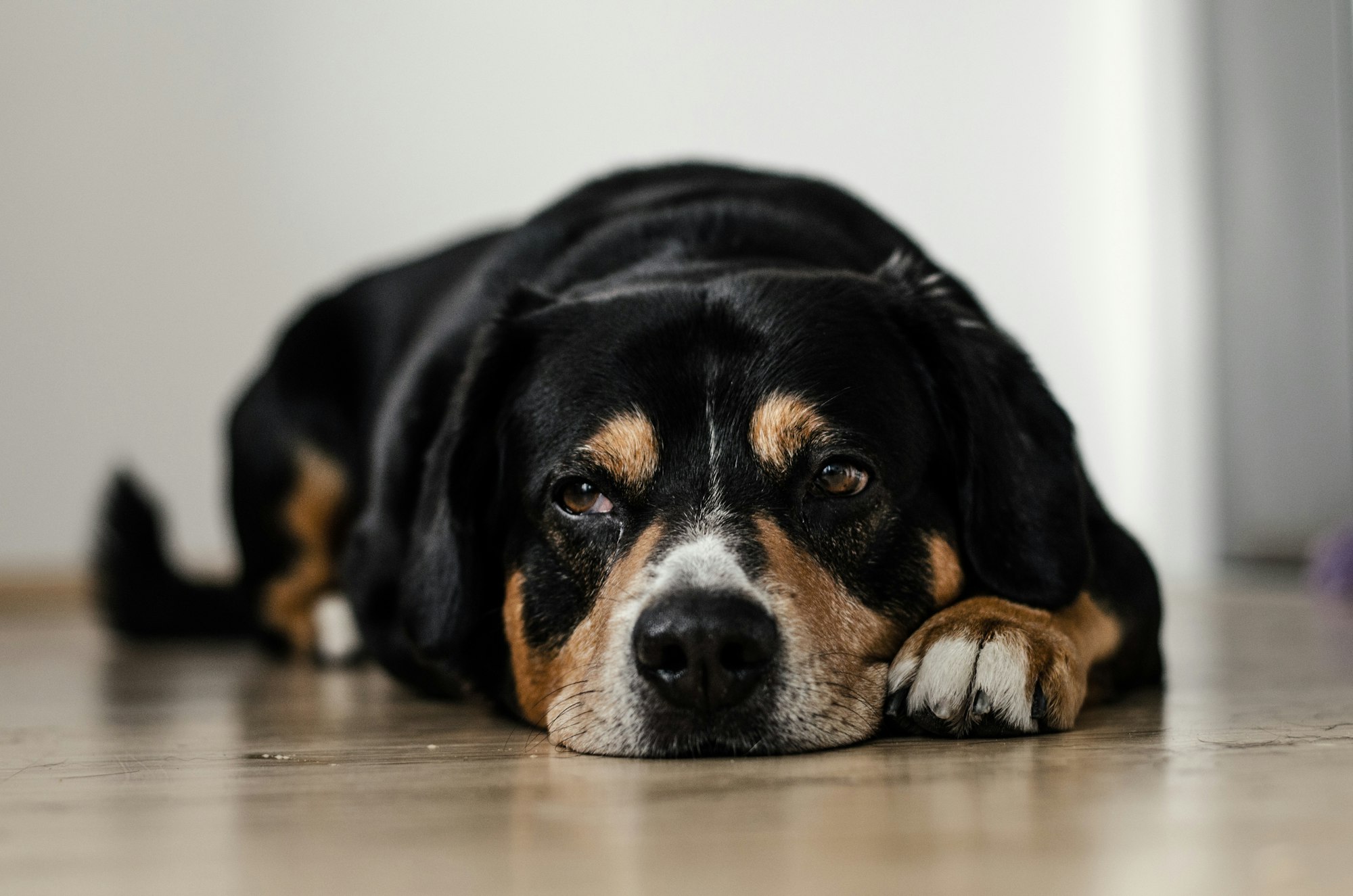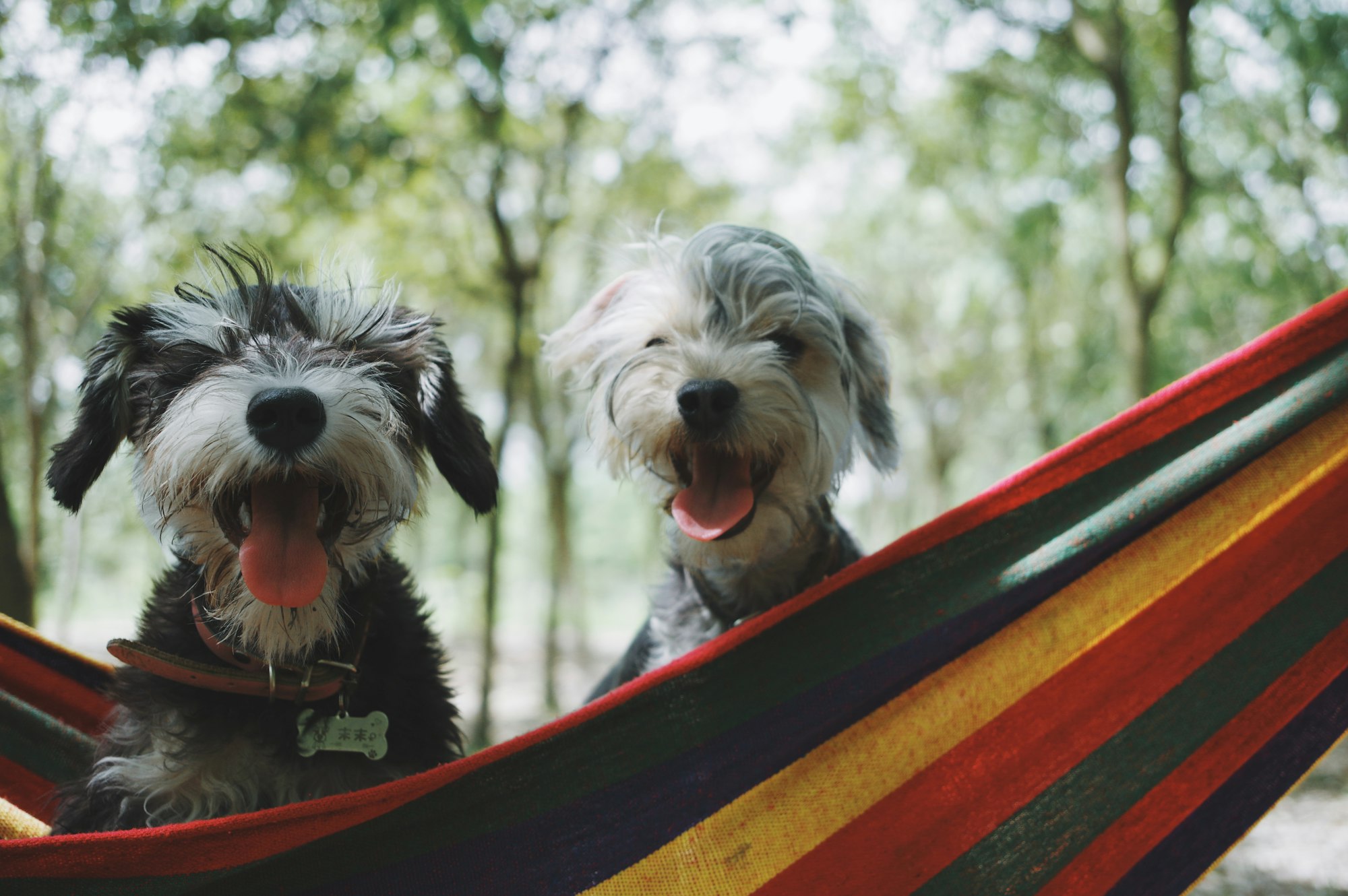In the course of a dog's life, they may get wounds along the way, just like us, humans. And when they do get wounds, it's just normal for paw parents to wish that our dog's wound would heal as soon as possible to ease the pain and discomfort that they may be feeling.
We must remember, however, that sustained wounds do not heal in an instant. There's a process towards healing, and how long it heals depends on the kind and severity of the wound, how the body heals itself, as well as how it is addressed or treated.
Nevertheless, while your pal will inevitably have to undergo the dog wound healing stages, there are ways how to heal a dog wound fast (or at least without complications) if proper dog wound care is given.
This article was reviewed by Dr. Chris Vanderhoof (DMV).
Dog Wound Care
There are many kinds of wounds that your dog can get, and treating these would depend on how minor or severe they are, as well as what caused them.
Paw wound care
For many dogs who often walk outside, getting a paw wound is common. While paw pads provide your dog's feet with protection with their toughness, they may still sustain wounds because they are directly exposed to sediments, particles, and rough surfaces when walking. When there is a cut or tear on your dog's paw, below are the ways to care for it:
- Clean the wound;
- Try to control the bleeding;
- Assess the severity;
- Wrap it with a bandage (make sure you can slide two fingers under the bandage so that it's not too tight);
- Allow the paw to heal while protecting it.
Ear Wound Care
There are various possible causes of ear wounds. And because the blood supply in a dog's ears is high, it may cause bleeding even if the wound is just a tiny cut or tear. However, there is no need to panic. If proper and timely care is given, there won't be any problem in the healing process.
As a general rule, any wound that is more severe than a minor cut should warrant a visit to the vet. But when does a wound become an emergency situation? Here are some of the critical examples:
- Deep wounds;
- Heavy bleeding or lesser bleeding that persists for longer than ten minutes;
- Bite wounds;
- Eye injuries;
- Wounds that contain foreign objects;
- Dirty wounds;
- Wounds with an infection.
Please note that what you see on the outside may not reveal the severity of the wound so if it's more than a minor scratch and you are worried about your dog, it's best to proceed straight to the vet.
Dog Wound Healing Stages
While there are many possible kinds of dog wounds, the majority of these go through the following dog wound healing stages:
Inflammation
This stage is the body's immediate reaction upon sustaining a wound. While it may cause the most pain and is the most physically noticeable too, it is an essential part of the healing process.
According to research, inflammation is the immune system's first response to sustaining a wound. The damaged tissues send signals to the body to start the process of healing.
First, the body's capillaries are given signals to tighten while the arterioles are given signals to expand. This increases the blood flow, white blood cells, and fluid towards the location of the wound.
As it happens, there is an increased protein count in the fluids, which then brings more water to the wounded area, thus resulting in swelling, heat, redness, pain, and stiffness.
These symptoms are just normal, except when your dog has a high fever and too much bleeding on the location of the wound. If so, it's best to bring your dog to the vet immediately for diagnosis and treatment.
Normally, it may take about a week for the inflammation to wear off, but it also depends on how severe the wound is as well as your dog's overall health. Look out for signs of possible infection such as prolonged pain, heat, redness, pus, and a foul smell coming from the area of the wound.
Debridement
The next stage is debridement, which occurs in the next few hours. This stage may come in two forms, depending on the severity of your dog's wound.
In an acute wound, the white blood cells that have rushed to the area of the wound now begin to attack by getting rid of any foreign particles that may be found on the wound, removing debris as well as dead cells. This is part of the body's natural response where cells come to the rescue.
On the other hand, if the wound appears black or blue, white and thin, and is leather-like, this may translate to the presence of dead tissue that would need the help of a surgeon to be debrided.
Classifications of Debridement
-
Selective
This process involves the removal of the dead tissue without affecting the healthy tissue. -
Nonselective
Both the dead and healthy tissues are eliminated.
Forms of Debridement
-
Autolytic
This is done by the white blood cells for the first 3-5 days upon sustaining a wound. It is the perfect example of selective debridement because the healthy cells are kept unchanged while the damaged cells are removed with accuracy. -
Surgical
This involves a selective process by a surgeon, where unhealthy tissues are removed based on their characteristics such as texture, color, temperature, and vascular supply. -
Mechanical
With this form of debridement, tissue is physically removed from a dried dressing. Being nonselective, it is the least preferred. -
Larval Therapy
In this selective method, maggots or their larvae are placed on the site of the wound. This is done for them to eat the dead tissue while the healthy tissues are left alone.
Importance of Debridement
Dead tissue harms the body in a way that prevents the body from healing the right way because it hinders its ability to produce new and healthy tissue. It can also cause infection and hide an infection that may already exist.
Repair
This stage occurs a couple of days after sustaining a wound. If your dog's wound is healthy and without infection, the cells will start to form and rebuild the lost and damaged tissues. At the same time, small blood vessels bring blood to the site of the wound. As a result, scabs are produced by skin cells so they can repair the wound.
When it is an open wound, however, it takes more time for new connective tissue to form.
What does it look like?
A wound that is in the repair stage features granulated tissue, which most of the time is colored reddish pink with red lumps along the wound's surface. At the same time, bumpiness, a raised surface, and moistness will be present.
Yes, the granulated tissue may appear alarming due to its reddish-pink hue. However, remember that the formation of the granulated skin is a healthy sign of a wound in repair. As a paw parent, you may contribute towards this stage by keeping the wound clean, moist, and warm to allow proper drainage and avoid damaging the delicateness of this tissue.
Maturation
This stage starts 2-3 weeks after your dog sustains the wound. In the previous stage (repair), the wound becomes thick and unappealing as part of the healing process.
In the maturation stage, new collagen fibers are formed. Here, there is a cross-linking as an alignment is established by the tension lines and collagen, coming together with the reabsorption of water. This decreases the thickness of the scar and strengthens the wound.
Please note that this stage may take a matter of months or years, and its strength will only reach about 80% of its original state before the wound happened.
Reaching this stage is desirable as your dog won't feel the pain and discomfort compared to the first stages. While a scar may remain, the important thing is that the wound is already closed and dry.
Home Remedy For Dog Licking Wound
While some may have a notion that a dog's saliva may aid in the healing process of their wound, this is far from true. Imagine how your dog licks on themselves and the things that they encounter in their surroundings. As a result, if your dog licks the wound, it might be exposed to dirt, and bacteria, which can slow down the healing process.
With this, prevention will be your best bet in keeping your dog from licking their wound. One home remedy for this is to use an Elizabethan collar to hinder your dog from licking the wound. Depending on where the wound is located, other alternatives include wrapping the wound with a bandage, a shirt, or putting on a dog coat on them.
Severe Cases: Online Vet & Emergency Fund
When it comes to severe cases, bringing your dog to the vet is necessary. Meanwhile, there are online veterinary services that are advantageous not only for general concerns but also in emergency cases, particularly before and after you bring your dog to the vet.
Read more: What To Expect From An Online Vet Visit
Two of the trusted services are Petcube's Online Vet & Emergency Fund. With these services, you get access to personalized advice from licensed vets anytime and anywhere. At the same time, Emergency Fund also covers emergency cases so you get to save money as well in the cases when your dog needs immediate medical attention.
FAQ
What should I use to clean a dog wound?
When it comes to how to clean a dog's wound, using warm tap water is advised. A warm salt solution (a teaspoon of salt for every 2 cups of water) may help as well. There are cases when your vet may prescribe a diluted cleansing solution such as surgical soap or an iodine solution to aid in removing dirt or debris from the wound.
Is it okay to use hydrogen peroxide on a dog wound?
It is not recommended to use hydrogen peroxide on dog wounds as it may actually delay the healing process. When it comes to putting any solution on an open wound, it is necessary to consult with your vet first.
What can I put on my dog's wound for faster healing?
Non-toxic treatments for skincare and wounds may help prevent infection and keep the wound site clean. These may include antibiotic ointments that your vet may prescribe to help cleanse and provide relief for your dog. Afterwhich, covering it with a bandage may be recommended for added protection. However, remember to change the bandage and dressing daily.
Why is my dog's wound not healing?
It is important to note that there are 4 stages to dog wound healing. If you notice that your dog's wound is not moving from one stage to the next, certain factors may be preventing the wound from healing, such as it might be infected. Consult the vet immediately.

Was this article helpful?
Help us make our articles even better

